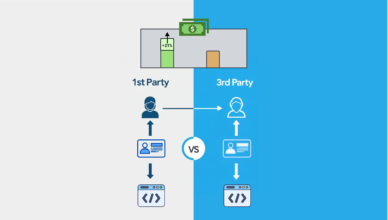Regulators are tightening privacy rules, consumers are less trusting of brands’ use of data and browsers are blocking the data that once fuelled personalised and targeted marketing on the web. To safeguard from the disruption caused by these privacy-based shifts, publishers and advertisers need a way to responsibly activate audiences and restore consumer trust.
Such an outcome requires direct relationships between buyers and sellers, first-party data and publisher cohorts. This will result in supply chain transparency, protecting the relationships publishers and advertisers have with their consumers, respecting consumer consent and not leaking personal information.
The Value of Direct Relationships
As third-party data disappears, advertisers will need privacy-compliant first-party data to understand their audiences’ interests online. And it’s publishers who understand the behaviour of each individual on their website — they know what the interests of their users are, how long they spend on-site, how many times they visit and whether their browsing habits have changed. Working with publishers provides a privacy-safe environment for advertisers to buy in, built on top of consented first-party data and without the need for third-party cookies.
Direct relationships between the buy and sell-side also alleviate issues that arise from the complex advertising ecosystem we have today. This complexity is evidenced in the ISBA Programmatic Supply Chain Study, which revealed that for 15 advertisers to buy media across 12 publishers, information is currently passed through 300 different supply chains.
As the industry shifts to a new way of buying and selling media, here are the steps that publishers can take to harness their most powerful asset — first-party audience data — and build direct relationships with advertisers.
Step 1: Consider Data Availability
The first step is to understand the available data, which falls into one of three buckets:
- Behavioural
- Contextual
- Declared
Behavioural data is collected when a user browses a web page — time on page, clicks, scrolling and video engagement. Contextual data is gathered from the content being consumed and metadata — locations searched, description, topics and keywords. Declared data is provided directly to a publisher by users and subscribers — purpose of visiting, industry and preferences about specific topics or content).
First-party data owners must ensure that their database is as robust as possible to find the best audiences to target. Where data is low, first-party data owners should consider other approaches such as themed content, newsletter subscriptions or surveys.
Advertising performance data can also identify user attention metrics to help publishers and advertisers achieve the best results for campaigns. For example, data analysed by The Telegraph revealed that end of article ads had three times more engagement than other formats when targeting a specific audience group.
Step 2: Create Cohorts
Publishers are working with advertisers to build relevant segments or publisher cohorts — a privacy-preserving approach to targeting that groups like-minded users based on similar characteristics and behaviours, without identifying individuals.
And publishers provide advertisers with insights on their audiences that can’t be had elsewhere. This gives advertisers the ability to reach their audience and achieve relevancy without user privacy being compromised.
Publisher cohorts, built from first-party data, enable advertisers to increase relevancy and protect consumers’ privacy. The insights that publishers can provide — pre-, mid- and post-campaign — is an opportunity for publishers to demonstrate added value.
Cohorts can provide rich audience behaviour data that helps advertisers form closer relationships with high-value audiences using targeted messaging that aligns with their interests and online behaviours. The Guardian reported a 65% higher than average brand lift when using its first-party data, including a 102% increase in consideration for a luxury furniture brand campaign targeting a bespoke first-party cohort.
First-party cohorts also perform better than third-party data. US publisher Ranker, the global leader in fan-powered rankings, ran a campaign for a streaming service and reported lifts across the board when using cohorts built from first-party data. This includes a 31% increase in click-through rate (CTR) and a 175% improvement in conversion rate.
Step 3: Scale Direct Relationships
Today, the supply paths for buyers can be inefficient because they need to build it publisher-by-publisher. Publishers also have no consistent way of making their data available to buyers in a privacy-compliant and sustainable way.
As digital advertising increasingly requires privacy at its core, first-party data owners will need the infrastructure to control, connect and scale their data while planning and buying campaigns. Technology should be an enabler in this, rather than an intermediary. Publishers and advertisers need to work with privacy-preserving technology partners that facilitate them to connect at a global scale.
As privacy rewrites digital advertising rules, finding a sustainable and ethical way to buy media and reach consumers via consented data is a priority.
Disclaimer: The views, opinions and ideas expressed in this post belong to the author/s and do not necessarily reflect those held by State of Digital Publishing.









